When Kevin suggested a trip into Mexico City, I had visions of scraping our rearview mirrors on narrow streets.
Been there.
Of bumping a line of parked motorcycles and having to jump out and prop them up to prevent them tumbling down in a domino effect.
Done that.
And of being forced to back down a hill on slippery cobblestones in the pouring rain because the alley had suddenly narrowed.
Never again.
Contemplating the narrow streets and massive traffic of the second most populated city in the world, my response was a resounding, “Hell no! Not with this bus.”
So instead, we drove to Teotihuacan, a small town named after the nearby ancient ruins located on the outskirts of Mexico City. The campground was not much more than a large, grassy, back yard of the home of a lovely woman named Mina, but we loved it right away. There were several other long-term vagabonds camped there which was the most company we had found at any camp spots so far. They were mostly from Germany, a few families from Quebec Canada and one couple from Sweden. The park was alive with children and dogs. We had electricity, running water and a place to hang our hammocks. Kevin got his social fix chatting with our neighbors while I settled into a hammock to read the only English-language book I found in their community book exchange. Life was good.
I should tell you that a few days before arriving in Teotihuacan, on our drive down a tall mountain, we had burned up our brakes. I don’t mean they got hot; I mean when we stopped to take a photo of a church as we rolled into a small town, we noticed smoke billowing from the tires. Upon a quick inspection we saw flames. Thank God we had a fire extinguisher. We used the entirety of its contents as well as several bottles of water to put out the fire. After the adrenaline rush, followed by relief that we were able to put out the flames before we lost the entire “casa rodante” or rolling house, we limped our way to Teotihuacan.
Safely at the campground, ready to sit tight for a few days while a mechanic gave us brand new brakes, I welcomed the reprieve from the constant travel and stress of the last few days. While I cannot say I am exclusively a country girl as I still get a thrill from the chaos and hustle and bustle of the city, I’ve noticed as I get older, I enjoy the hammock life more and more. I prefer silence broken only by the sounds of nature, quiet conversation, and soft music while I sway in the tropical breeze.
However, I had forgotten that we were dealing with “Mexico time” and after a few days of promised “mañana, mañana,” even I got a little restless.
So, when Kevin again suggested a short trip to Mexico City, I agreed knowing the bus would stay safely behind at the campsite. I started looking at public transportation and hotels—It would be like a vacation from our vacation.
We booked the hotel for the following Thursday through Monday thinking a long weekend would give us enough time to see all there was to see. We soon discovered that a month of sightseeing every day would still not cover all the amazing things Mexico City has to offer, but our schedule only allowed us to extend our trip for an extra day.
We made a list of our personal must-sees, mine included a visit to Casa Azul, the home-turned-museum of Frida Kahlo and as many works of Diego Rivera I could find. Kevin’s list had a few more museums, landmarks and a Lucha Libre match.
We spent money like we had it. We ate dinner at the magnificent El Balcon restaurant that had a balcony view of the church and plaza of the Zócalo or public square. The Zócalo is one of the largest squares in the world, second only to Tiananmen square in Beijing China. It is bookended on one side by a centuries-old building—which now housed official offices on the upper floors, and fine jewelers on street level—and a grand cathedral on the other. In the center of the square was the largest Mexican flag I had ever seen (we had the privilege of watching the ceremonial lowering of the flag one day when it began to rain).
The city shone at night with Christmas decor and festivities. Lights hung from every building, light pole, and wall. Some were intricate seasonal designs of bells, poinsettias, and holiday trees, while others were thrown haphazardly over any surface that would support a string of lights, much like tinsel thrown by the handfuls at a Christmas tree. But the Zócalo itself was a Yuletide work of art, aptly decorated to host concerts in the evenings. We attended the performance of the world-renowned Mexican Philharmonic. It was magical.
Behind the Zócalo lie the remains of Tenochtitlan, the ancient Aztec empire built on an island surrounded by Lake Texcoco. The lake would later be drained to accommodate the modern city of Mexico City—which would explain why the city is sinking at an alarming rate of almost twenty inches per year. This would also account for the reason every building had to be evacuated when we experienced a miniscule earthquake.
We paid for the Hop On, Hop Off bus and toured the city’s famous monuments, historical buildings and its many, many traffic circles with statues, and memorials impressively adorning the centers. Kevin had anxiously looked forward to seeing one particular historic circle he had seen in many a magazine and advertisement for Mexico City tourism. The palm tree that adorned the center of the roundabout for over a century had sadly died in 2022 due to disease, leaving only a dirt mound surrounded by a fence of corrugated metal covered with graffiti in its place. He did his best to hide his disappointment.
The next morning after breakfast in the Parque Alameda we visited The Diego Rivera Mural Museum.
The mural was even more impressive than I had imagined and I couldn’t tear myself away. I examined every inch of the piece that had once adorned the side of a city building and now hung in a large room under bright lights. Every face in the scene, every expression revealed the essence of his politics and arrogance. Every stroke and hidden icon showed his devotion as well as his infidelities. His work was complicated and illuminating, and though, on many levels, I found the man repulsive, his brilliance and talent cannot be denied. I walked the fifty feet of brush strokes viewing it up close—the way he would have painted it. Then I stepped back and took in the scene as a whole—the way he must have envisioned it. I wanted to know what his message was, what it all meant. I walked away only slightly closer to solving the mystery of this multifaceted man than when I had arrived.
Getting to the Frida Kahlo House was not as easy. Tickets had to be purchased in advance. After taking a city bus, then a taxi in bumper-to-bumper traffic, we arrived thirty minutes late. Afraid we would be turned away and have to return another day, we approached the entrance prepared to beg if necessary, but we were ushered right in to the beautiful home with cobalt blue walls.
Unlike the work of Diego, Frida’s art bared her soul. While I had to concentrate on Diego’s work, trying to understand the message in every painting, Frida’s creations were quiet, honest, and almost reverently, demanded a polite silence that spread throughout the home.
Her sometimes lifelike, sometimes abstract artwork graced the walls throughout the home and reflected the pain and angst she suffered during her lifetime. Walking through the home where this amazing woman lived as a child and then later with her husband, Diego, I could feel her presence.
I could see the strong-willed child in her father’s photographs that lined the walls. I could almost hear her running barefoot through the garden as a child and see the even stronger-willed woman she became entertaining, often-times-scandalous, visitors on the terrace.
The brushes that lay untouched in a jar near her easel called to me, they whispered secrets of love, loss, and betrayal. I wanted to gently stroke the bristles long removed from the wet paint that had told her stories. Even the mirror that still hung awkwardly above the bed where she had convalesced reflected moments of her life. I reluctantly left Casa Azul, but I took a piece of Frida’s tortured soul with me.
* * *
Those two great artists were the extent of my wish list. Kevin’s, however, proved a bit more eclectic. We started the next day with a walk to the Arch of the Revolution monument where we discovered a free festival in full swing. The festival included live entertainment—one such performance was a Lucha Libre match, something that was also on Kevin’s list—so, of course we stayed for that. The masked wrestlers enacted eye-rolling fake throw downs during a match and prompted knee-slapping laughter with their comedic performance.
At dusk we took the elevator to the lookout deck of the arch to watch the sunset and see the city lights. Kevin then climbed more than one hundred steps of a narrow spiral staircase to the very top. Due to my crippling fear of heights, I opted to skip the anxiety attack-inducing experience.
We had heard museums were free on Sundays. To our delight, some were, and we visited as many as we could. The Museum of Fine Art was my favorite freebie and displayed more works of Diego Rivera along with many other famous Mexican painters and sculptors. Even the building itself was a work of art with its cascading staircases and carved pillars.
The Anthropological Museum was not free, but well worth the entrance fee. We spent a few hours exploring the exhibits of historical Mexico and learned of the ancient cultures that graced the country long before there were tourists, piñatas, and micheladas (beer, clam juice and spices—a local favorite).
On our final day in Mexico City we made our way to the nearby town of Xochimilco for a ride on one of their famous river boats. It took us several buses and metro trains to reach the small, unassuming town. I had heard tales of some of the world’s best pickpockets riding the rails in the city looking for unsuspecting tourists. I cannot count the number of times I warned (okay, nagged) Kevin about holding so loosely to his phone or putting his wallet in his back pocket while I kept my phone securely zipped into a barely-visible pocket of my purse (which I wore in a crossbody fashion) and my wallet velcroed shut in a separate pocket.
We made it to the town unscathed and began to wander the streets in search of the elusive boats. After several inquiries, we spotted the small, hand-painted signs pointing the way and finally arrived to the river’s edge. The boats were magnificent.
Each well-worn boat, scarred from years of use, was adorned with the same shades of brilliant pinks, greens, yellows and blues, yet each one was distinctly different from the others. Painted from stem to stern with bright colors and unique designs the boats had equally vivid arched sunshades that covered a long table down the center of the deck. Chairs, each one painted a different color, lined either side of the table.
Every boat proudly displayed its name above its deck. With so many to choose from we quickly took the first one offered which was 500 pesos ($20-$25) per hour. We paid for an hour and boarded our boat, named “Julieta.” We were the only customers and had the entire Julieta—a boat that seated twelve—to ourselves. The driver skillfully guided us through quiet canals using a long pole like he was steering a gondola. We sailed past homes tucked behind reeds along the banks and restaurants, gift shops, markets and nurseries that dotted the shoreline.
Too soon the romance of the narrow canals was replaced by the noise of a multitude of boats on the river. Some held mariachi bands or other types of musical bands, while others carried goods of flowers, blankets, sarapes, or souvenirs. Some even offered tacos, the infamous michelada drink or shots of tequila or mezcal. Woven in and around the merchant boats were vessels filled with tourists, a few held families out for a leisurely cruise, while others had raucous partiers on board.
Passing by one establishment we noticed a few dolls hanging from the fence, then more and finally hundreds of dolls filled every exposed space, hanging on the barrier like dirty and molded bougainvillea blossoms. The driver explained that an eccentric man lived on the other side, and no one knew the origins of the urban legend known simply as the muñeca (doll) man.
As a special treat our driver left the hustle and bustle of the river and took narrow canals past quiet homes before returning us back to the boat docks to slide silently into his slip alongside dozens of other Xochimilcan boats.
We contentedly walked the several blocks back to catch our bus to the metro line and return to our room before heading back to Teotihuacan to address the repairs on the brakes.
Back at the hotel, we decided to pack our things so we could spend one more night out in the city and not have to pack before our early morning bus ride. As I emptied the contents of my purse on to the bed, I made a karmic discovery—my wallet I had so smugly told Kevin was theft proof—was missing.
While Kevin had one last steak dinner from the rooftop above the Zócalo in Mexico City that night, I had to humbly eat crow.
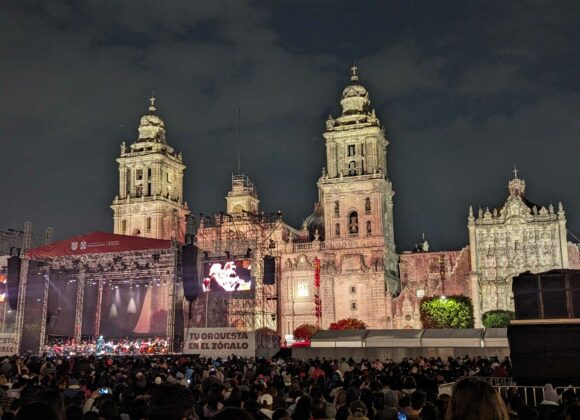
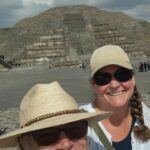
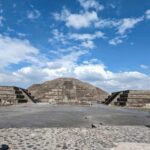
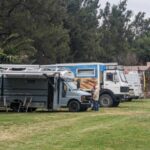
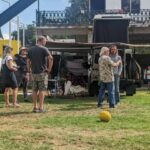
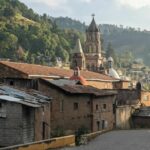
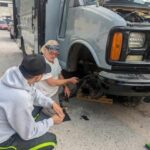

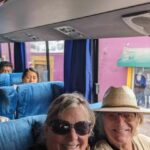
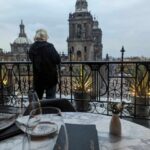
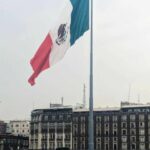
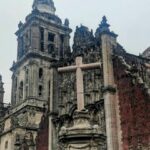
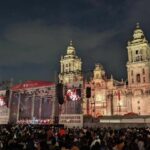
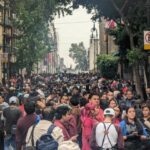
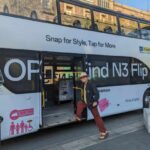
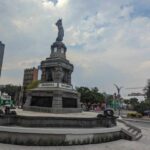
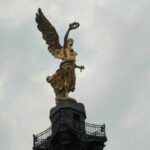
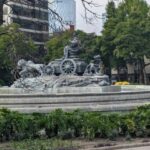
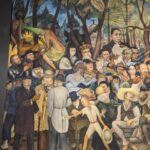
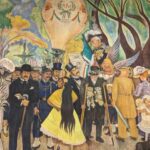
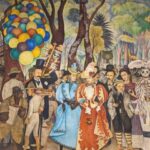
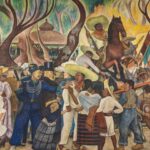
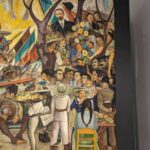
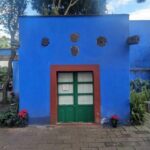
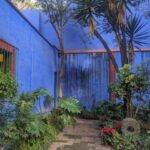
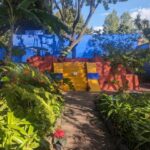
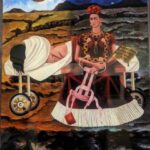

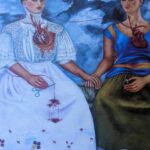
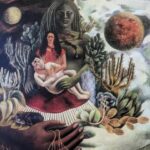
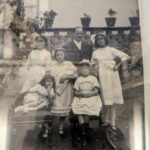
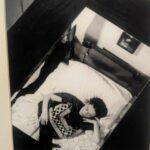
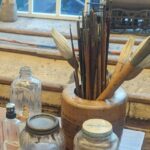
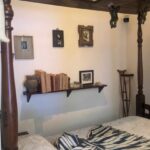
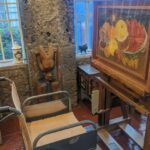
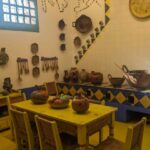
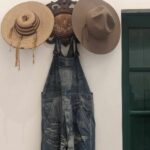
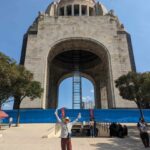
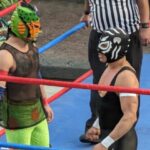
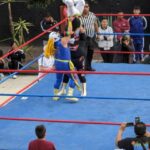
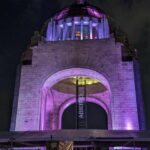
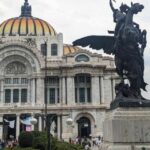
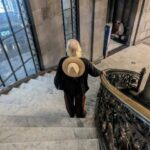
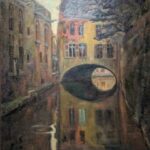
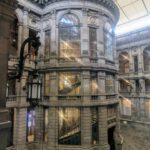
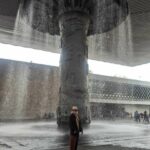
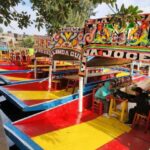
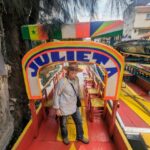
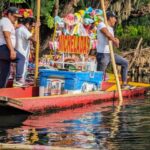
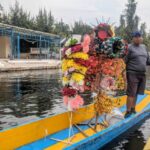
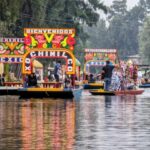
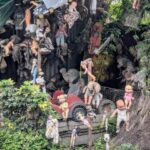
Great stories cuz!
Hello friends. Fun to catch up. I’m glad you’re on Polarsteps. I enjoy the map and pix ability on the site. Don’t see how to leave a comment there so am trying this. I look frwd to your ongoing adventure.
I’m back in Texas before heading home to Oregon. Enjoy.